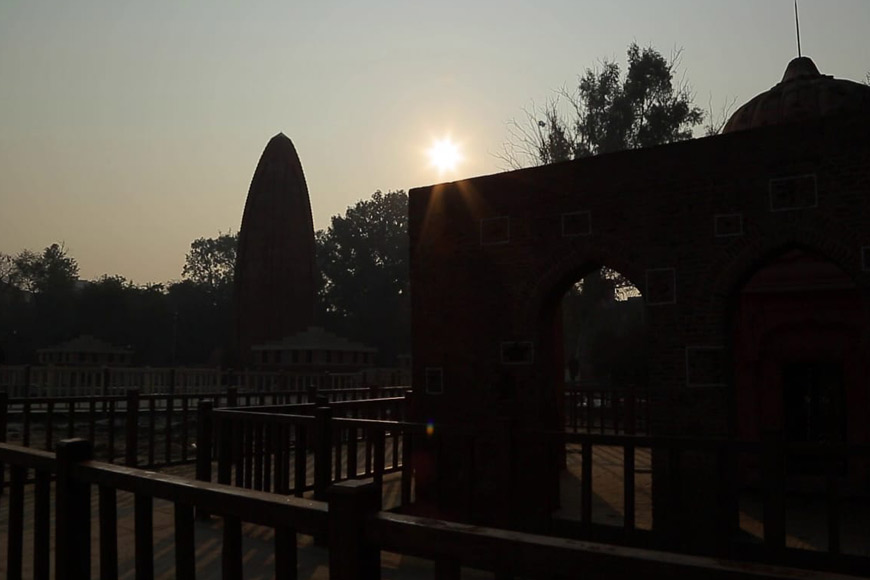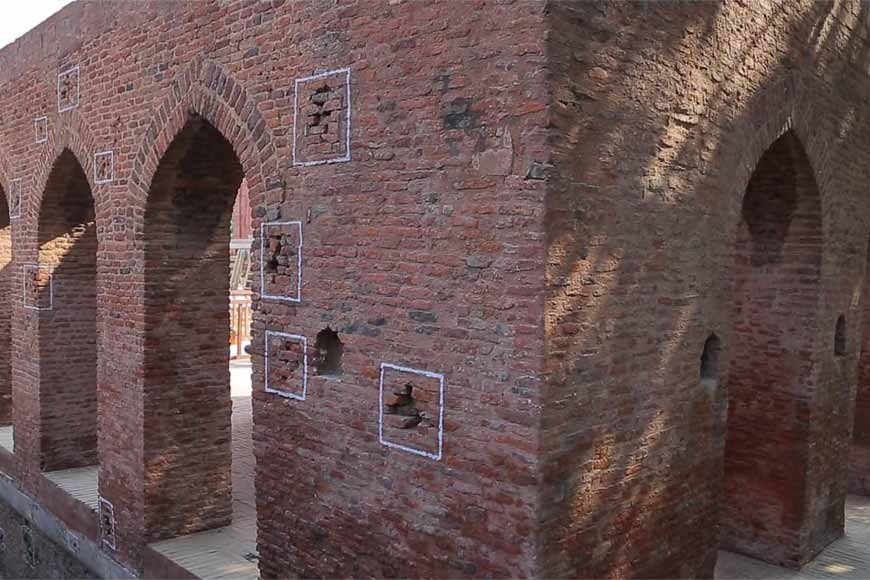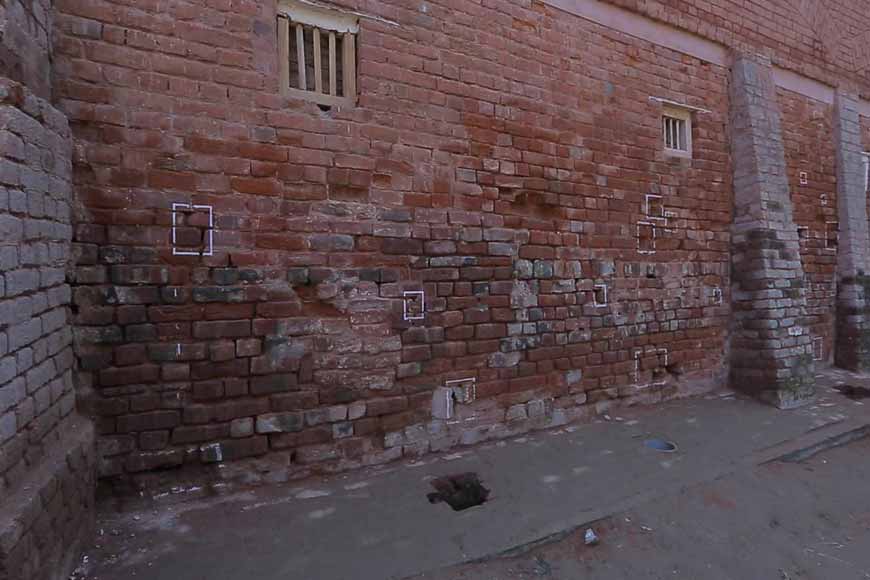Jallianwala Bagh documentary an eye-opener at KIFF

The ‘Competition on Indian Documentary Films’ section at the Kolkata International Film Festival (KIFF) this year features some interesting works, one of them being Kolkata-based documentary filmmaker and producer Mujibar Rahman’s 100 Years of Jallianwala Bagh Massacre – News, Views, Reflection. Rahman already has well-known documentaries such as Rabindranath Thakur – Jiban O Samay and biographical documentaries on Rokeya Sakhawat Hussain (Rokeya – Aloker Dooti), Munshi Premchand (Kalam Ke Sipahi), and Nazrul Islam to his credit, and has also directed several short documentary films on legends of Indian classical music. His full-length feature films include Sansodhan and Bhangoner Pore.
Excerpts from an exclusive chat with GB:
• Please tell us about your documentary and the research that went into it
We all know about the Jallianwala Bagh Massacre from history textbooks we read as students. It was one of the worst brutalities unleashed by the British regime, and almost a thousand people died in police firing. What I tried to capture in the documentary is not just the incident but how it shook the collective consciousness of all Indians, leaders and revolutionaries who were fighting the British for Independence.
When I started my research, the first thing that struck me was the fact that a senior Army officer like Brigadier-General Reginald Dyer would be used to following orders as a member of a disciplined force. He could not have taken such a drastic measure on his own. There must have been others who were involved in this conspiracy and Dyer was just a cog in the wheel, who ordered his troops to open fire at innocent people. He was singled out as the perpetrator of a heinous crime against humanity. But as I delved deeper, I realised the depth of the conspiracy and in the documentary, I have tried to unearth this conspiracy that challenges the popular narrative.
What was the catalyst for the events of that day and how did it become a turning point in India’s struggle for Independence? Why did the British feel the need to impose martial law in Amritsar, which had shown little inclination for violence, despite provocation? Why did the people of Punjab suffer barbaric punishments, including public flogging, torture and even bombing, unknown to the rest of the world?

• What was the build up to the massacre on April 13, 1919?
During World War I, over one million Indian troops served overseas and a majority of them were Sikh. Records show that 74,187 Indian soldiers died in the war, but those who returned were left to fend for themselves. Discontent began to grow among the masses and the British government came up with the Rowlatt Act (formally known as The Anarchical and Revolutionary Crimes Act of 1919) to curb an impending ‘revolt’.
The Rowlatt Act was passed by the Imperial Legislative Council in February 1919. The act enabled the British government to preventively detain anyone suspected of plotting to overthrow the government for as long as two years without trial, and also to try them summarily without any jury. The purpose of the act was to curb the growing nationalist sentiment in the country. Mahatma Gandhi and other Indian leaders were extremely critical of the act and argued that not everyone should be punished in response to isolated political crimes. In fact, Gandhiji asked the people to stage a Satyagraha against the act.
In Punjab, this protest movement was very strong, and on April 1o, Congress leaders Dr Saifuddin Kitchlew and Satyapal were arrested and taken secretly to Dharamsala. Sir Michael O’Dwyer was Lieutenant-Governor of Punjab at that time, and he called the army into Punjab. He was alarmed by the effect Gandhiji was having on the province, as well as by the demonstrations, strikes and shows of Hindu-Muslim unity. All these things, in his mind at least, were a precursor to a second Indian mutiny. So on April 13, when he ordered Dyer to Amritsar, I believe he wanted Dyer to teach the city a lesson.
People from several villages had gathered at Jallianwala Bagh for Baisakhi celebrations and to protest against the arrest of the two Congress leaders. These grounds became the focal point for O’Dwyer’s law enforcers. Dyer marched his soldiers into the walled garden, filled with thousands of unarmed men, women and children, blocking the only exit. Then, without issuing any order to disperse, he asked his men to open fire, turning their guns on the thickest parts of the crowd. For 10 minutes, the firing continued, stopping only when 1650 bullets had been fired. Not a single shot was fired in retaliation.
Based on the reports of the Hunter Committee and the Indian National Congress, as well as other historical documents, I have tried to analyse Dyer’s actions and their fallout - the official narrative and the Indian counter-narratives.
• The concept of your documentary sounds like a spine-chilling thriller. Did you have easy access to your source materials?
I researched extensively and all incidents depicted in the documentary are based on concrete evidence. In this context, I would like to bust two commonly believed notions. After the massacre, Rabindranath Tagore requested both Gandhiji and Chittaranjan Das to organise a protest meeting at Amritsar, even offering to go there and deliver a speech condemning the British government’s brutality. It is generally believed that neither leader paid heed to Tagore’s suggestion. Instead, C.R. Das asked Tagore himself to organise the meet and offered to attend it in an individual capacity.
Tagore was hurt and disappointed and gave up his knighthood as a mark of protest. But the actual reason behind the leaders’ reluctance was their political foresight. They knew circumstances were volatile in Punjab, and their visit would worsen the situation. Later, C.R. Das left his work as a busy barrister in Calcutta behind, and went to Amritsar as head of the committee investigating the massacre.
• What are your future plans? Do you want to stick to documentary filmmaking or venture into feature films again?
Making documentaries is a challenging job indeed but it is also back-breaking, and unlike feature films, the reach is still very limited, at least in India. I have worked in Mumbai for five years as assistant director to mainstream filmmakers and have worked for television, written scripts and stories as well. I have made feature films in Bengali but documentary filmmaking is my passion. It is my labour of love. It is a thankless job and there’s hardly enough money in it to attract aspiring filmmakers. Availability of audiences and screening platforms is also very limited, yet I enjoy making documentaries on various subjects that compel me to step out of my comfort zone and enrich myself.

• What’s the next project you are planning to take up?
There are a few projects in the pipeline. For one, I want to make a biopic on Swami Vivekananda. I have already done exhaustive research on Swamiji. Now, I am waiting for a producer.
• How does it feel to have your documentary selected for the competition section at KIFF?
It gives me immense pleasure when one of my works is selected for a prestigious international film festival like KIFF. I still remember the early editions of KIFF where I used to hang out 24x7, grabbing every opportunity to watch and learn. Now of course, it has become a mega event, attracting not only the cine fraternity but a wide section of the populace. This is very encouraging. Besides, thanks to the government’s proactive measures, documentary filmmakers like us are getting an opportunity, a platform, to showcase our works.
• What’s the future of documentary filmmaking?
Making documentary films in India is very tough owing to lack of funds and lack of a mainstream audience. Many of the platforms we had access to earlier, like NFDC (National Film Development Corporation) or Doordarshan, are no longer available. The private sector and NGOs are unwilling to support documentary filmmakers except projects based on their own spheres of activity. But then, making documentaries is like answering the call of the heart and the soul. There’s a sense of fulfilment and achievement at the end of a project and that, like the elixir of life, keeps us going.
100 Years of Jallianwala Bagh Massacre – News, Views, Reflection is scheduled to be screened at Sisir Mancha on Sunday, May 1 at 1.30 pm











